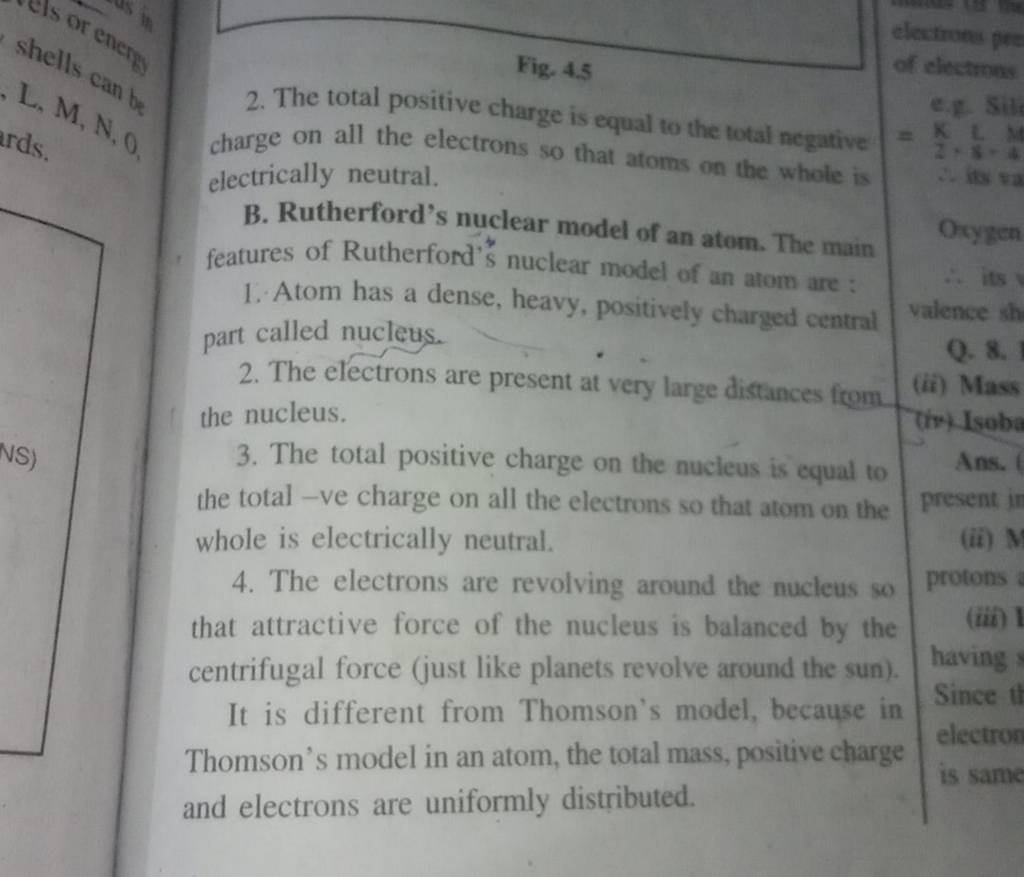Question
Question asked by Filo student
Rutherford's nuclear model of an atem. The main features of Rutherford's nuclear model of an atom are :
- Atom has a dense, heavy, positively charged central part called nucleus.
- The electrons are present at very large distances form the nucleus.
- The total positive charge on the nucleus is equal to the total-ve charge on all the electrons so that atom on the whole is electrically neutral.
- The electrons are revolving around the nucleus so that attractive force of the nucleus is balanced by the centrifugal force (just like planets revolve around the sun).

Filo tutor solution
Learn from their 1-to-1 discussion with Filo tutors.

Generate FREE solution for this question from our expert tutors in next 60 seconds
Don't let anything interrupt your homework or exam prep with world’s only instant-tutoring, available 24x7
Found 8 tutors discussing this question
Discuss this question LIVE
12 mins ago
Practice more questions on Chemistry
Question 1
Views: 5,191
(a) displacement
(b) angle between force and displacement
(c) force applied
(d) initial velocity of the object
Question 2
Views: 5,960
Shaving cream, Milk, Fog, Soap solution, Hairspray
Question 3
Easy
Views: 5,991
Question 4
Easy
Views: 6,112
Students who ask this question also asked
Question 2
Views: 5,378
Question 3
Views: 5,416
Question 4
Views: 5,155
| Question Text | Rutherford's nuclear model of an atem. The main features of Rutherford's nuclear model of an atom are : |
| Topic | Chemistry |
| Subject | Science |
| Class | Class 9 |
